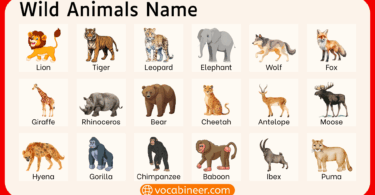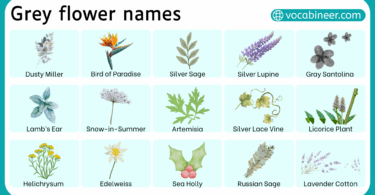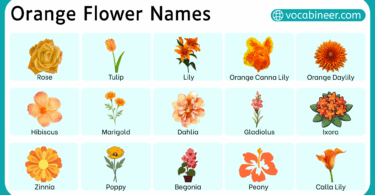Animals live in different types of homes depending on their size, behavior, needs, and natural environment. These homes protect them from weather, predators, and offer space to rest, find food, or raise their young. Learning the names of animals homes in English helps students, kids, and ESL learners talk about animals more accurately in conversations, schoolwork, and science lessons. Below is a complete categorized list of animals and the places they live, with simple explanations and useful examples.
In This Page
Common Animals and Their Homes in English with Pictures
These are animals that we see often in villages, cities, or schools. Their homes are commonly used in vocabulary teaching for beginners.
- Lion – lives in a Den

- Dog – lives in a Kennel
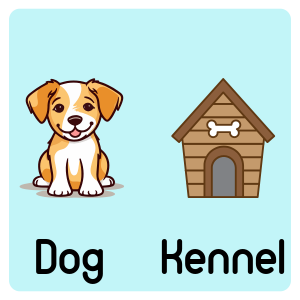
- Cat – lives in a Cattery / House
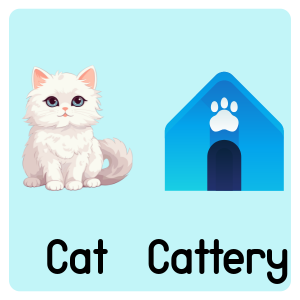
- Horse – lives in a Stable
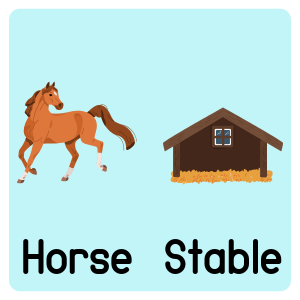
- Cow – lives in a Shed / Barn
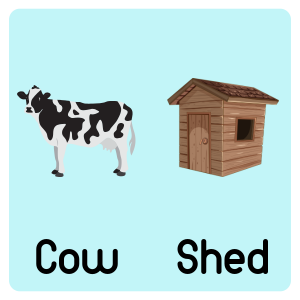
- Goat – lives in a Pen
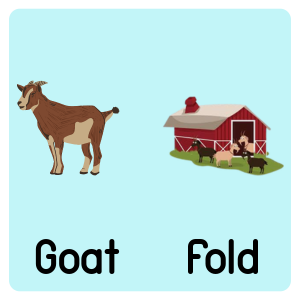
- Sheep – lives in a Fold / Pen
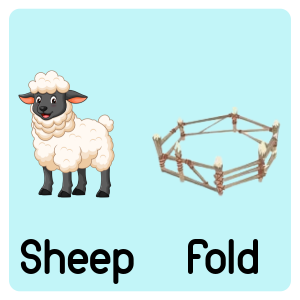
- Pig – lives in a Sty
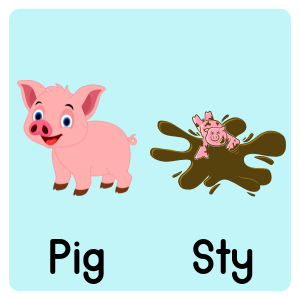
- Hen / Chicken – lives in a Coop
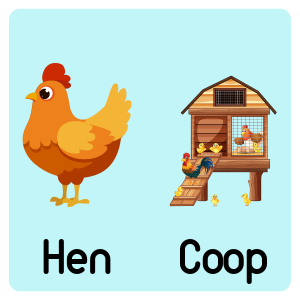
- Duck – lives in a Pond / Nest
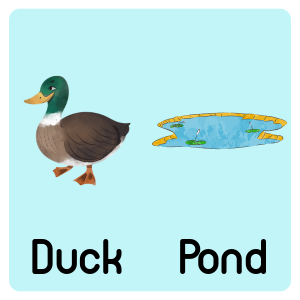
- Bee – lives in a Hive
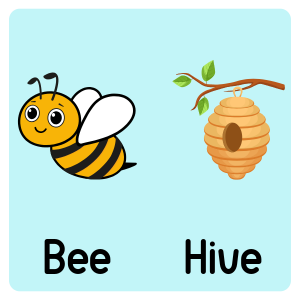
- Ant – lives in an Anthill
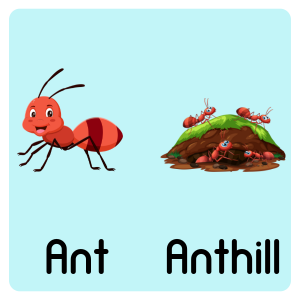
- Bat – lives in a Cave
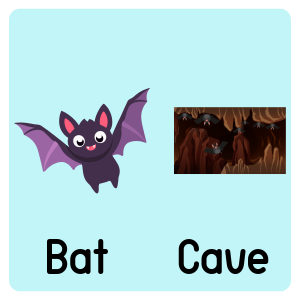
- Rabbit – lives in a Burrow / Hutch
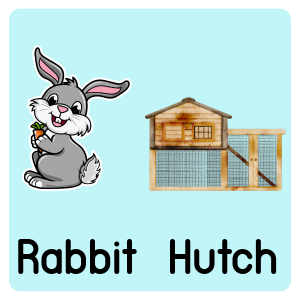
- Bear – lives in a Den / Cave
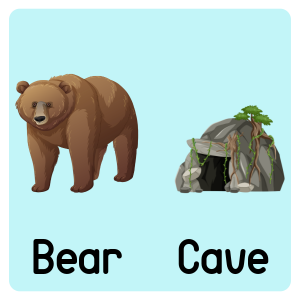
- Spider – lives in a Web
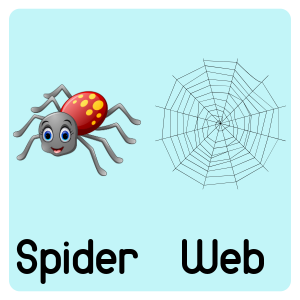
- Camel – lives in a Desert
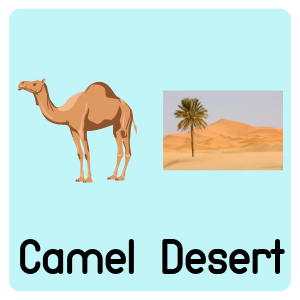
Farm Animals Homes and the Places They Live
Farm animals are raised for food, milk, wool, or work. Their homes are built by humans to keep them safe, clean, and healthy.
- Cow – kept in a shed or barn
- Goat – stays in a pen, barn, or enclosure
- Pig – lives in a sty
- Horse – lives in a stable, often with straw bedding
- Chicken – kept in a coop or henhouse
- Duck – stays in a duck house near a pond
- Turkey – lives in a coop or farm pen
- Donkey – stays in a stable or shed
- Buffalo – lives in a mud shelter or barn
- Camel – tied in a pen or rests under shade shelters in desert farms
Wild Animals and Their Natural Homes Name
Wild animals live in forests, jungles, deserts, or mountains. They make their homes in trees, caves, or underground to stay hidden and protected from predators.
- Lion – lives in a den or cave
- Tiger – lives in a lair or jungle
- Bear – stays in a cave or den, often during hibernation
- Wolf – lives in a den with its pack
- Elephant – stays in the forest or grassland
- Fox – digs a burrow or den underground
- Deer – lives in a forest or woodland
- Leopard – hides in trees, rocky caves, or bushes
- Giraffe – roams in savannahs and sleeps near trees
- Zebra – stays in open grasslands or plains
Birds and Their Nesting Places They Build
Birds build nests to lay eggs and protect their chicks. Nests can be made from sticks, leaves, mud, or feathers and vary by species.
- Sparrow – builds a nest in trees or rooftops
- Crow – nests on branches or poles
- Pigeon – nests on ledges, buildings, and roofs
- Eagle – builds large nests on cliffs or tall trees
- Owl – lives in a hollow tree, barn, or attic
- Parrot – makes nests in tree holes or nesting boxes
- Swallow – builds mud nests under eaves or bridges
- Woodpecker – drills holes in tree trunks for nesting
- Peacock – rests on tree branches but nests on the ground
- Penguin – nests on ice, rocks, or coastal grounds
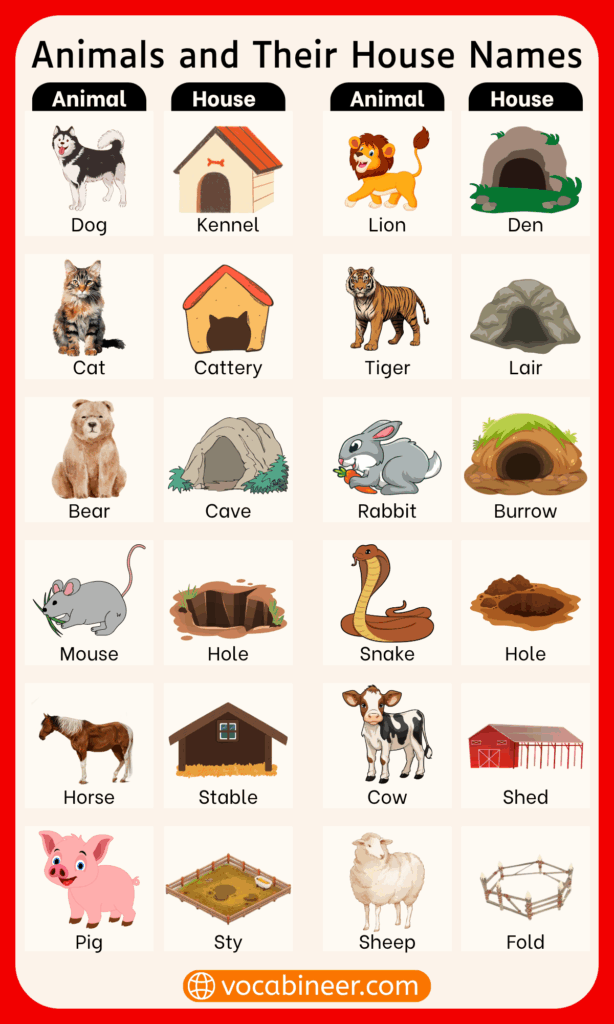
Water Animals and Their Living Spaces Name
Aquatic animals live in fresh or saltwater environments. Some stay in rivers and ponds, while others live in oceans or icy waters.
- Fish – lives in a pond, lake, river, or ocean
- Frog – lives near a pond, in wetlands, or marshes
- Crocodile – found in rivers, swamps, or estuaries
- Turtle – lives in water, but nests on sand beaches
- Whale – swims in the ocean
- Dolphin – lives in the sea and surfaces to breathe
- Seal – stays on ice or rocky shores and in cold seas
- Shark – lives deep in the ocean
- Octopus – hides in ocean caves or under rocks
- Jellyfish – floats freely in the sea
Names of Insects Houses Where They Live
Insects build small homes that are often hidden or underground. Some live in groups (colonies), and some stay alone.
- Bee – lives in a hive, often hanging or man-made
- Ant – lives in an anthill or underground nest
- Spider – builds a web, sometimes in corners or between leaves
- Termite – creates a mound or hides in wooden structures
- Wasp – stays in a paper-like nest often built on walls or trees
- Butterfly – rests on leaves, bushes, or near flowers
- Mosquito – lives in stagnant water or dark corners
- Beetle – hides in soil, wood, or under leaves
- Grasshopper – stays in grasses and fields
List of Pet Animals Homes Name in English
Pets are animals kept at home for care, friendship, and sometimes safety. Their homes vary based on size and type.
- Dog – lives in a kennel, but often shares the house
- Cat – stays in a basket, bed, or indoors
- Rabbit – lives in a hutch or cage
- Hamster – kept in a cage with a wheel
- Parrot – lives in a cage or aviary
- Goldfish – stays in a fish tank or aquarium
- Turtle – lives in a terrarium or tank
- Guinea pig – kept in a cage with bedding
- Budgie – lives in a birdcage
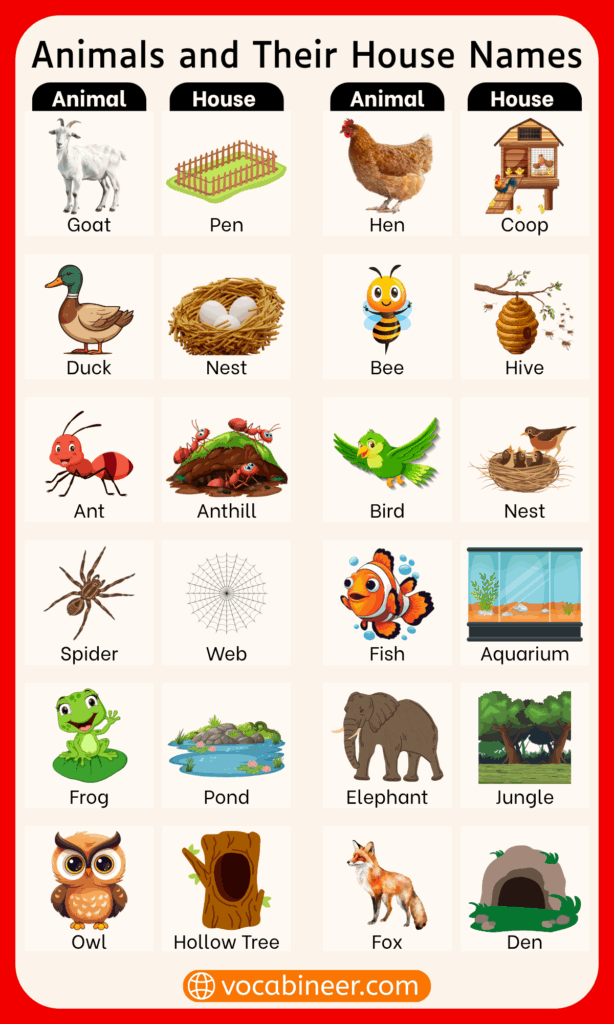
100 Names of Animals Homes in English
Every animal has a special place where it lives or rests. These homes protect them from weather, predators, and danger. Below is a list of 100 animal homes in English to help learners understand and remember where different creatures live.
- Dog – Kennel
- Cat – Cattery
- Cow – Shed
- Horse – Stable
- Sheep – Pen
- Goat – Barn
- Pig – Sty
- Hen – Coop
- Duck – Pond
- Rabbit – Burrow
- Lion – Den
- Tiger – Den
- Elephant – Jungle
- Bear – Cave
- Deer – Grassland
- Fox – Den
- Wolf – Lair
- Monkey – Tree
- Snake – Hole
- Frog – Pond
- Fish – Water
- Crocodile – Swamp
- Turtle – Shell
- Bird – Nest
- Owl – Tree Hollow
- Eagle – Eyrie
- Parrot – Cage
- Penguin – Colony
- Bat – Cave
- Bee – Hive
- Ant – Anthill
- Termite – Mound
- Spider – Web
- Wasp – Nest
- Butterfly – Garden
- Mosquito – Water
- Fly – House
- Worm – Soil
- Snail – Shell
- Crab – Hole
- Lobster – Sea Bed
- Whale – Ocean
- Dolphin – Sea
- Shark – Ocean
- Seal – Coast
- Walrus – Iceberg
- Polar Bear – Ice Cave
- Camel – Desert
- Kangaroo – Grassland
- Giraffe – Savanna
- Zebra – Grassland
- Rhinoceros – Jungle
- Hippopotamus – River Bank
- Crocodile – Marsh
- Flamingo – Wetlands
- Peacock – Garden
- Crow – Nest
- Sparrow – Nest
- Pigeon – Loft
- Dove – Cote
- Goose – Pond
- Turkey – Roost
- Partridge – Thicket
- Swan – Lake
- Seal – Shore
- Otter – Den
- Beaver – Lodge
- Rat – Hole
- Mouse – Hole
- Mole – Burrow
- Hedgehog – Nest
- Squirrel – Drey
- Porcupine – Burrow
- Rabbit – Warren
- Jackal – Den
- Leopard – Cave
- Crocodile – Riverbank
- Duckling – Nest
- Owl – Barn
- Koala – Tree
- Panda – Forest
- Sloth – Tree
- Chimpanzee – Tree
- Gorilla – Forest
- Lizard – Hole
- Tortoise – Burrow
- Snake – Den
- Bee – Beehive
- Ant – Hill
- Termite – Mound
- Fox – Hole
- Bat – Cave
- Camel – Desert
- Donkey – Stable
- Mule – Stable
- Ox – Barn
- Buffalo – Shed
- Catfish – River
- Seal – Coastline
- Reindeer – Tundra
FAQs About Animal Homes
A den is a hidden or sheltered home for animals like lions, wolves, and foxes.
Most birds build nests, but some like penguins nest on ground or ice without trees.
A burrow is a tunnel dug by animals like rabbits or foxes. A cave is a natural rocky space often used by bears or bats.
No. Ants build anthills from soil; bees build hives from wax.
Yes. A dog may live in a kennel outside or inside the house with its family.
Read More


